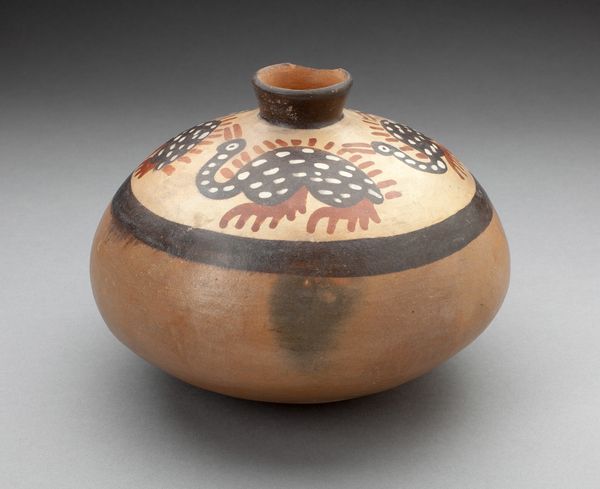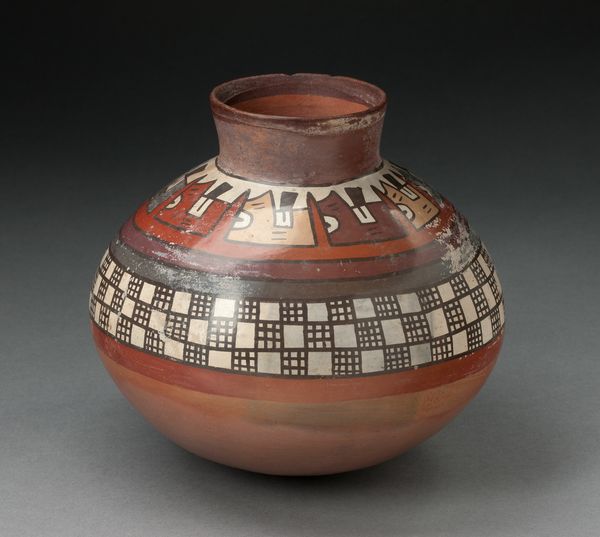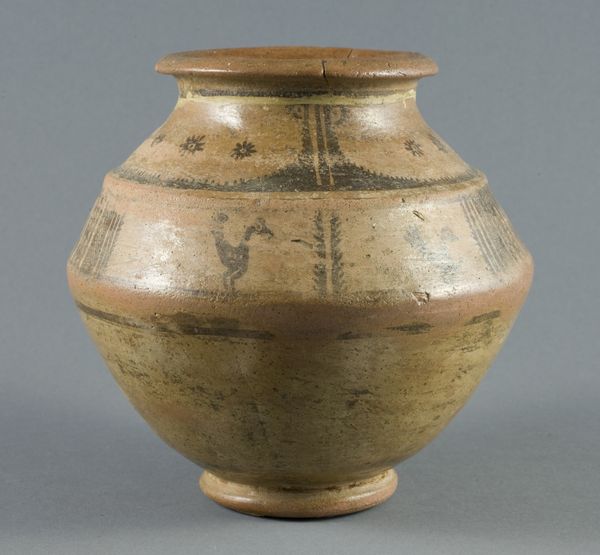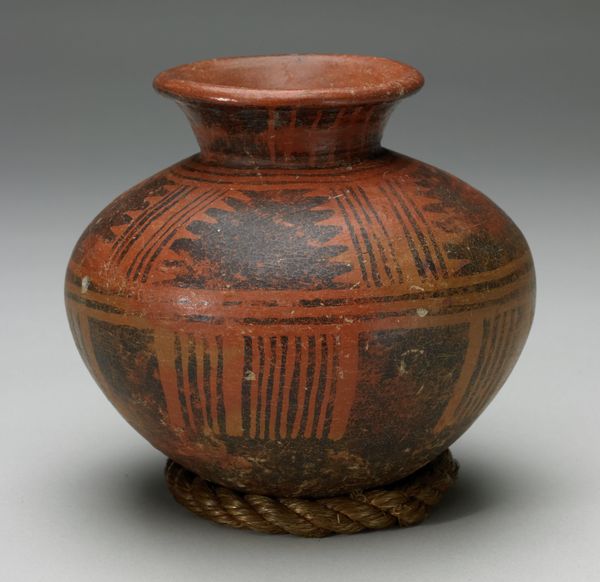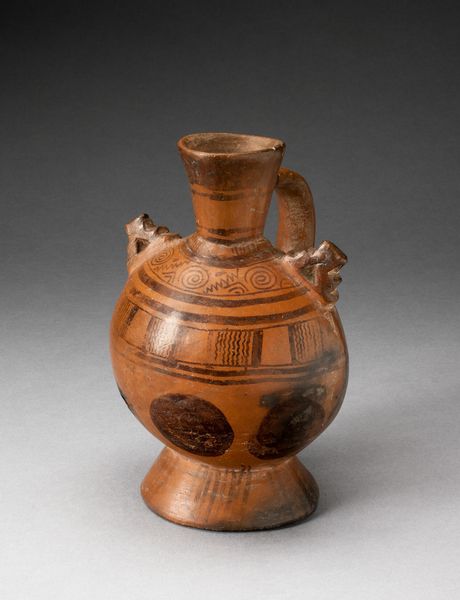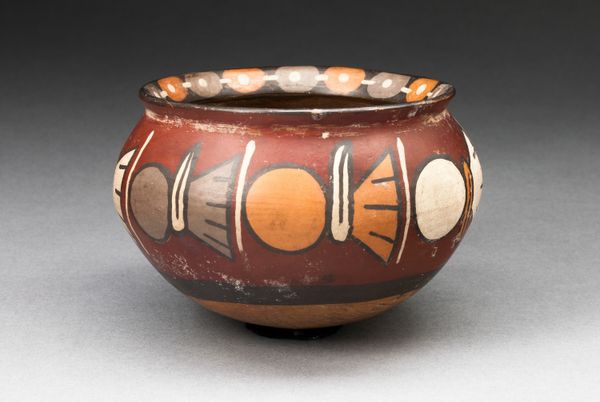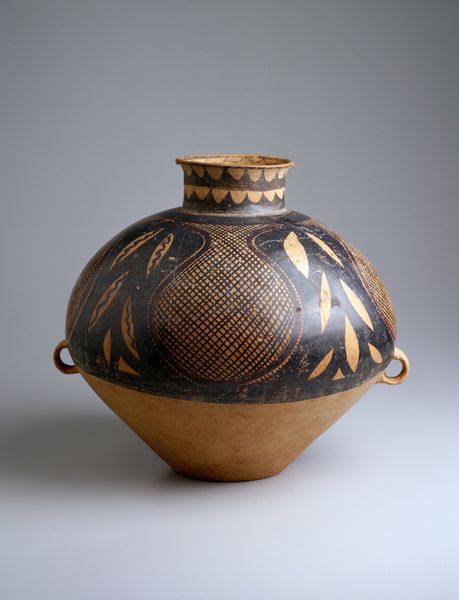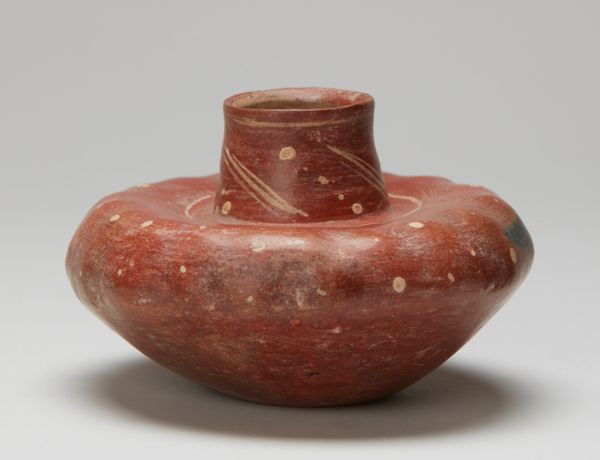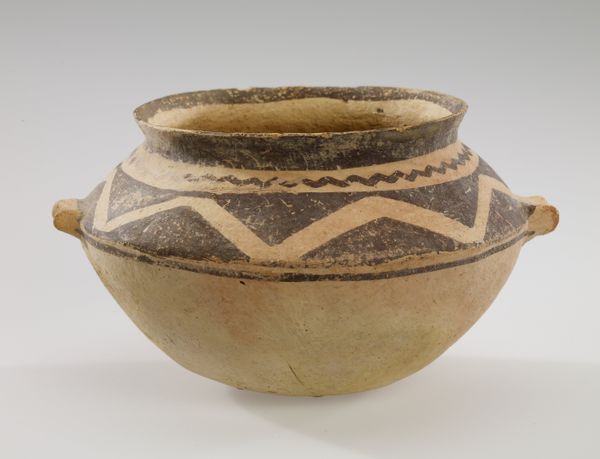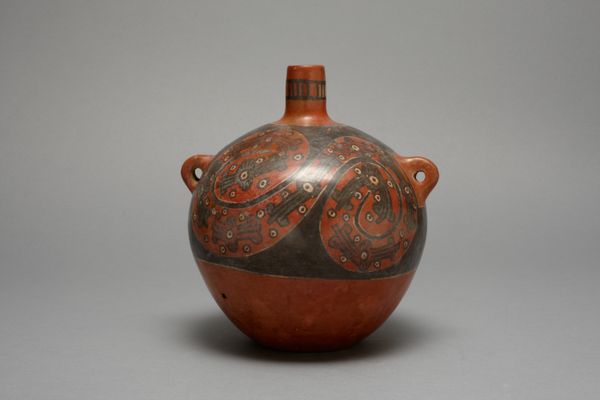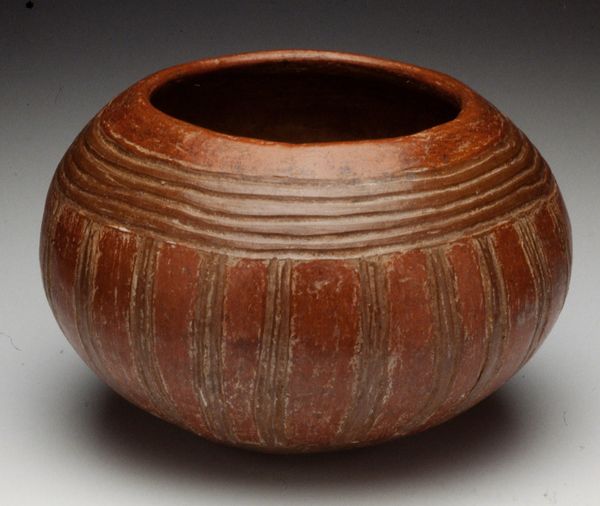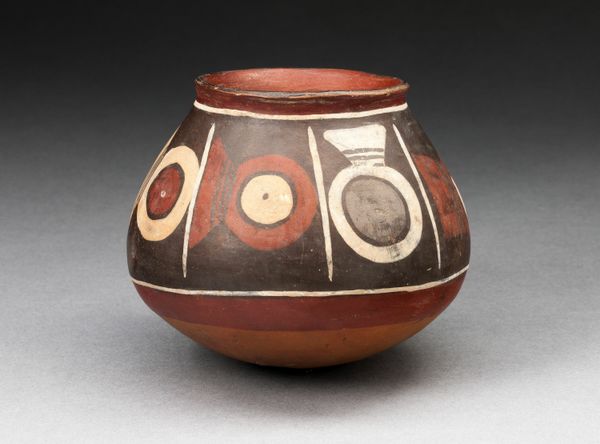
Pyxis (Container for Personal Objects) c. 7th century
0:00
0:00
ceramic, earthenware
#
greek-and-roman-art
#
ceramic
#
earthenware
#
ancient-mediterranean
#
ceramic
Dimensions: a (jar): 9.6 × 12 × 12 cm (3.80 × 4.75 × 4.75 in) b (lid): 2.6 × 9.6 9.5 cm (1.06 × 3.79 × 3.77 in)
Copyright: Public Domain
Curator: The pyxis before us, a container for personal objects dating back to the 7th century, crafted by an ancient Etruscan artisan. Its home today is here at The Art Institute of Chicago. What are your initial impressions? Editor: It strikes me as surprisingly functional. It's not ornate; the simple stripes and drips suggest a practical, everyday object made of ceramic—earthenware to be precise, and it seems designed for repeated handling, use. Curator: Absolutely. The very form speaks to the daily rituals of its owner. We might even think about whose hands made it, likely shaped and decorated in a communal setting where labor was a gendered and classed reality. Editor: I am curious to the firing process to achieve those colours. And how that affects our interpretation. Perhaps it’s evidence of standardized craft or simply readily accessible materials and technologies, dictating the aesthetic outcome? Curator: Indeed, material availability and processes cannot be separated from its purpose. Perhaps a container for cosmetics, or small tools—things carried between households, potentially speaking to women's roles and itinerant labor across communities. The handles suggest easy portability. Editor: Considering the constraints on mobility imposed on certain demographics at this time adds complexity to understanding its function, doesn't it? Curator: Exactly. A container is not simply a container; it’s a repository of culture, social roles and, ultimately, silent narratives that ripple through time. Editor: Looking at the craftsmanship, its aesthetic restraint serves a humble purpose effectively. Something grounding about encountering it. Curator: It challenges our preconceptions about art and labor—demanding an appreciation for how ordinary, material acts reflect the complicated and connected layers of society. Editor: I agree. There's much to learn about what seems straightforward initially. Curator: Absolutely. And it makes one consider art's utility versus fine arts. Thank you.
Comments
No comments
Be the first to comment and join the conversation on the ultimate creative platform.
